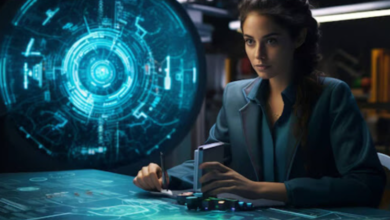The Increasing Demand for Remote Medical Scribes and Its Impact on Healthcare

In today’s changing healthcare landscape, documenting patient interactions has become crucial. Medical scribes and professionals responsible for recording physician-patient encounters in time have traditionally worked onsite in settings. However, with advancements and the rise of work acceptance, there is a growing need for remote medical scribes. This shift to scribing could transform healthcare delivery by improving the efficiency of clinical documentation and enhancing overall patient care quality.
The Development of Medical Scribing
They initially served as physician assistants who manually recorded details to ensure comprehensive medical records. Medical scribes aimed to alleviate doctors’ paperwork burdens so they could focus more on patient treatment. Over time, the role of scribes has evolved to include knowledge of medical terminology, adherence to federal healthcare regulations, and proficiency in various Electronic Health Record (EHR) systems.
Remote Medical Scribing: An Emerging Practice
The emergence of technology and strong communication networks has made it easier to transition towards medical scribing. Remote medical scribes use communication platforms to listen to recordings of patient visits and input real-time information into electronic health records (EHRs). This approach offers flexibility, allowing scribes to work from different locations, including their homes.
Read also: Garden Aftercare: Ensuring Your Outdoor Space Thrives Year-Round
Advantages of Remote Medical Scribing
1. Improved Productivity:
Physician Attention: By delegating documentation tasks to scribes, doctors can focus more on interacting with patients, making diagnoses, and planning treatments.
Decreased Burnout: Physicians often experience burnout from long work hours and extensive paperwork. Remote scribing helps alleviate this stress, balancing work and personal life and increasing job satisfaction among healthcare professionals.
2. Enhanced Accuracy in Medical Documentation:
Real-Time Recording: Remote scribes can document encounters immediately, ensuring that medical records are thorough, complete, and current.
Consistency in Documentation: Trained professional scribes follow documentation protocols to maintain high accuracy and consistency in patient records. This is crucial for patient care and legal compliance.
3. Scalability and Adaptability:
Flexible Workforce: The remote scribe model allows healthcare institutions to adjust their workforce based on changing demands. It proves valuable during peak periods when additional remote scribes can be hired without needing office space.
Expanding the Talent Pool: Remote work opens up opportunities to hire scribes from locations worldwide, creating a more diverse and talented workforce for healthcare providers.
Considerations and Challenges
Ensuring Data Security and Compliance
HIPAA Regulations: Medical scribing prioritizes compliance with the Health Insurance Portability and Accountability Act (HIPAA). Remote scribes must adhere to security measures to protect data from potential breaches and unauthorized access.
Secured Communication Channels: The use of communication platforms and encryption technologies is crucial for safeguarding the transmission of patient information.
Integration
Learning Curve: Transitioning from in-person to scribing may require training for scribes to get acquainted with new tools and workflows. Continuous education support can help ease this transition.
Integration with EHR Systems: Seamless integration between scribing software and Electronic Health Record (EHR) systems ensures access to documented information. Compatibility and user-friendliness are also factors.
Maintaining Quality Standards
Standardizing Practices: Regular quality checks are needed to ensure that remote scribes uphold documentation standards by following established practices.
Feedback Mechanism: Effective communication between physicians and remote scribes plays a role. Providing feedback and performance evaluations helps uphold the accuracy and quality of documentation.
Impact on Healthcare Delivery
Patient Experience
1. Improved Communication: By having remote scribes handle tasks, doctors can dedicate attention to patients, resulting in enhanced experiences and higher satisfaction levels.
2. Reduced Waiting Times: Streamlined documentation processes can speed up operations in healthcare settings, leading to shorter patient wait times.
Increased Access to Healthcare
1. Operational Efficiency: Effective documentation allows healthcare providers to handle loads without compromising the quality of care, which is especially beneficial in areas with limited healthcare resources.
2. Integration of Telemedicine: The growth of telemedicine has broadened access to healthcare services. Remote medical scribes support telehealth consultations by documenting visits in time, ensuring thorough records comparable to those from in-person appointments.
Data-Driven Decision Making
1. Comprehensive Medical Records: Quality documentation offers data for healthcare analysis, facilitates decision-making, aids medical research efforts, and supports public health initiatives.
2. Tracking Health Outcomes: Accurate records help monitor patient health outcomes effectively, enabling healthcare providers to customize treatments and interventions.
Future Prospects
The demand for scribes is projected to rise steadily as healthcare systems increasingly acknowledge their importance. These new technologies have the potential to enhance scribing capabilities by automating documentation tasks while assigning more complex responsibilities to human scribes. Moreover, the shift towards value-based healthcare models, prioritizing outcomes and quality of care over quantity, highlights the importance of detailed medical records. Remote medical scribes play a role in this transition by ensuring documentation that supports superior care delivery and tracking of outcomes.
In Conclusion
The increasing demand for scribes is reshaping the healthcare landscape. By enhancing efficiency, precision, and scalability in documentation, remote scribes enable physicians to concentrate on their core strengths—providing care. Although challenges like data security, healthcare data entry, training, and quality control are present, the advantages far outweigh the obstacles. As the healthcare sector evolves, incorporating remote medical scribes shows promise in improving care delivery, enhancing patient experiences, and cultivating a responsive healthcare system.




